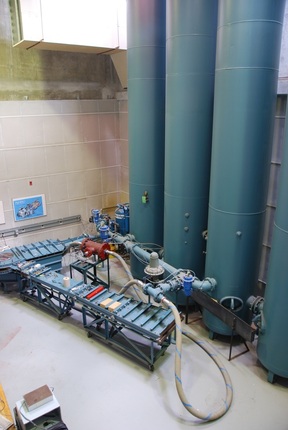World-class research
Advanced aerodynamics and aeroacoustics research not only takes place within areas across the Department of Mechanical and Aerospace Engineering, like many of the areas of focus, it has applications across disciplines as well.
Six large-scale open-circuit wind tunnels, a blow-down transonic wind tunnel, a large-scale closed-circuit wind tunnel, a whirl tower, and a large-scale water channel provide an excellent test environment for experimental research focusing on aerodynamic performance, aeroelasticity, and aeroacoustics. These test facilities are equipped with state-of-the-art flow-motion and object-motion measurement tools including thermal anemometry, laser velocimetry, and solid-body motion capture systems.
In 2015, Carleton installed a whirl tower, a unique facility tailored to the study of the dynamics and aerodynamics of rotor components in rotorcraft.
The most recent addition to these facilities, scheduled to become operational early in 2016, is the Wind Induced Dynamics Facility (WinD Lab). It will enable testing of medium-size unmanned aerial vehicles at full-scale sizes at speeds close to 80 km/hr, including six-degrees-of-motion of the test model via a stewart platform. This new wind tunnel is funded through a S-LOF CFI grant and consists of a lab space of approximately 1500 square feet.
Faculty members with a research focus in aeroacoustics and cabin noise prompted 250 square feet of lab space to be re-purposed in 2013 and enabled the installation of an anechoic test chamber.
The Pratt & Whitney High-Speed Wind Tunnel will also see a considerable upgrade in 2016 to include an aeroacoustic addition to the high-speed laboratory to study compressible flows at high subsonic Mach numbers. The implications of this research will result in a better understanding of the noise production of aircraft structures, eventually yielding a quieter operation and flight experience for passengers.
The Facilities
 Carleton Aerospace has several facilities purposed for research in this area:
Carleton Aerospace has several facilities purposed for research in this area:
Low Reynolds Number Tow Tank and 3D Flow Visualization











